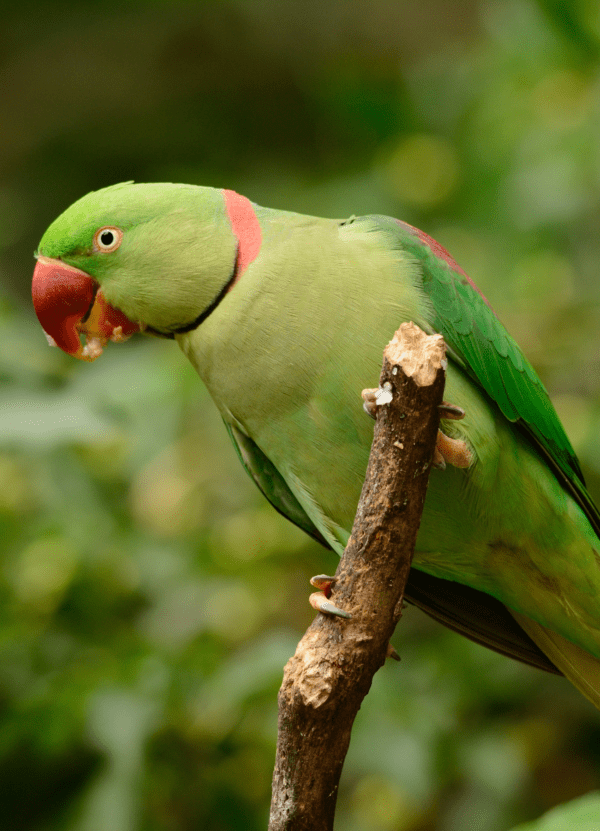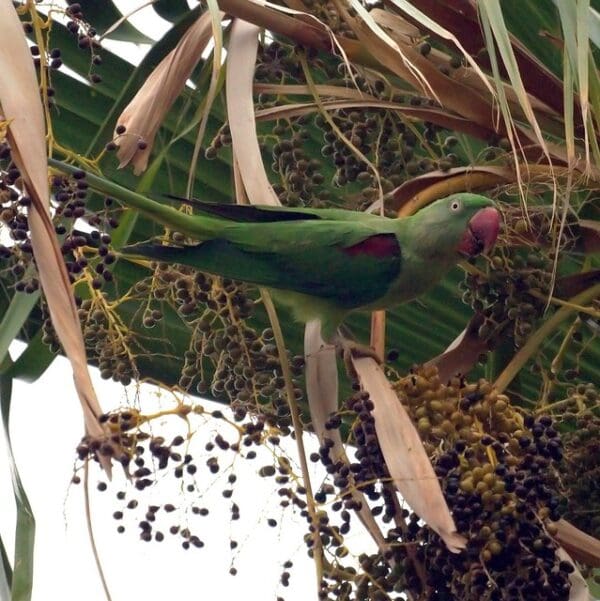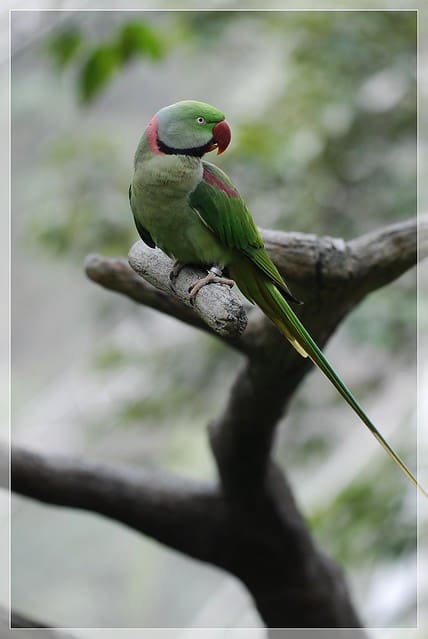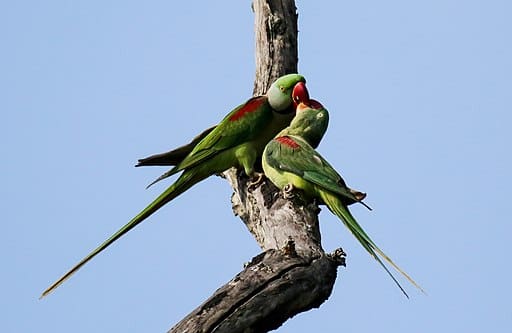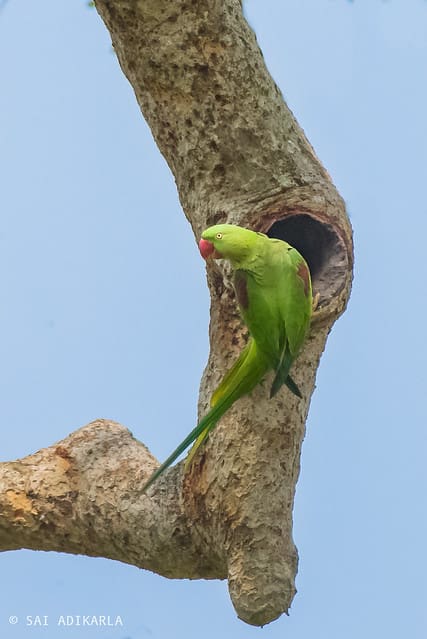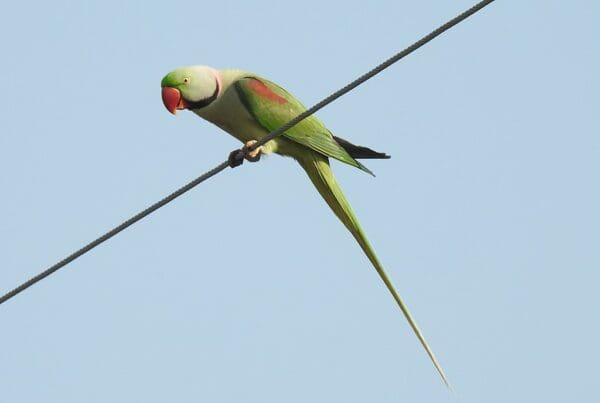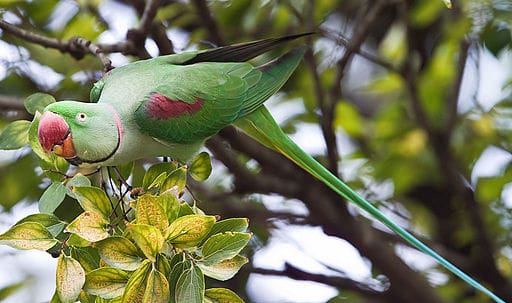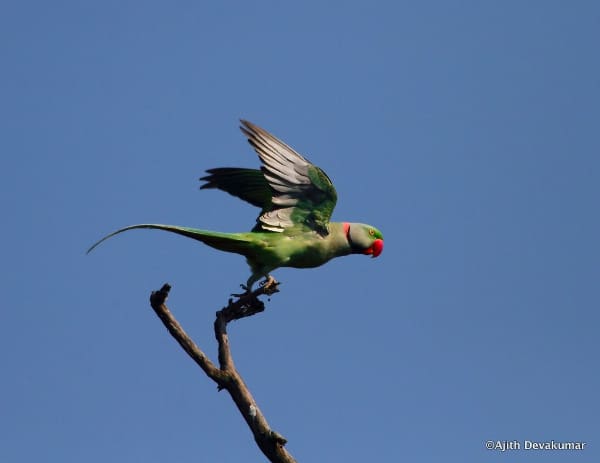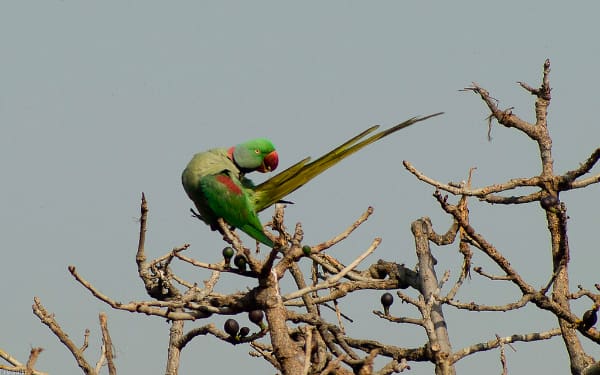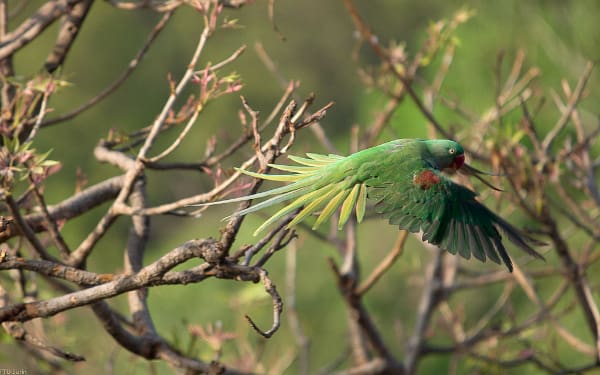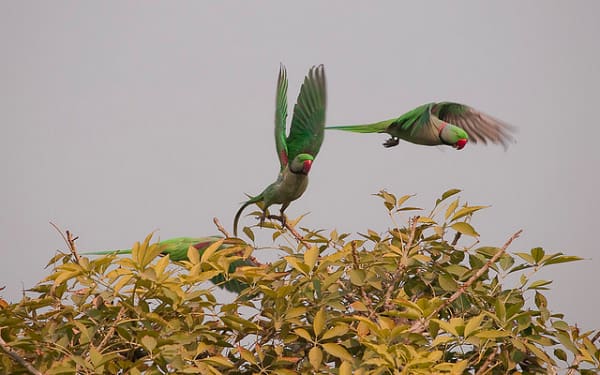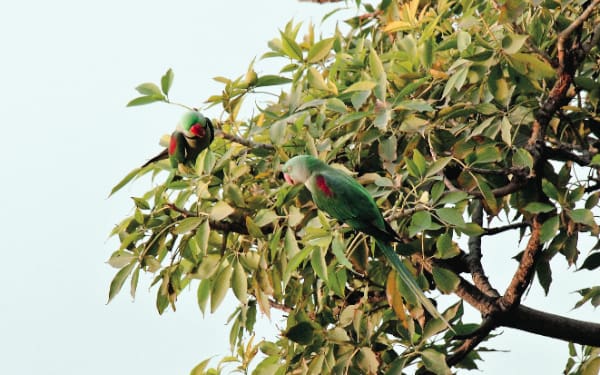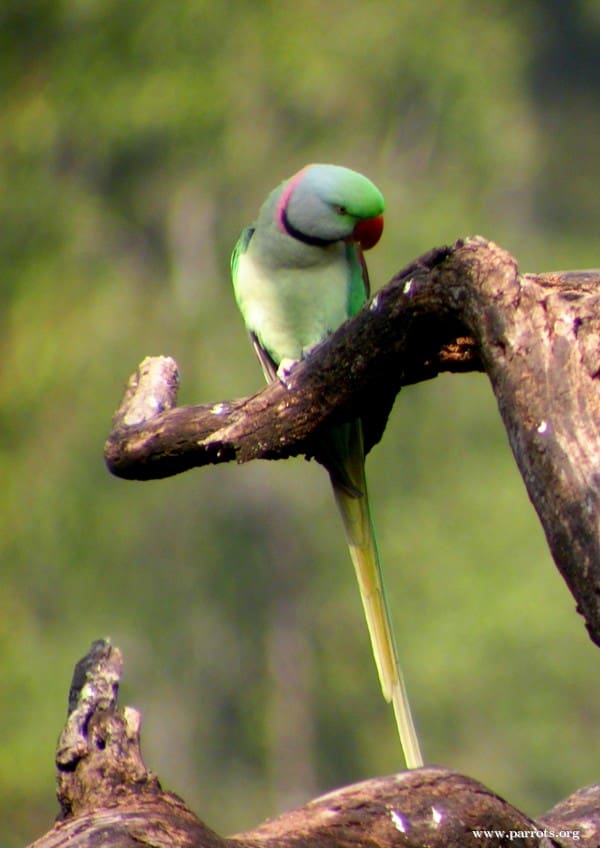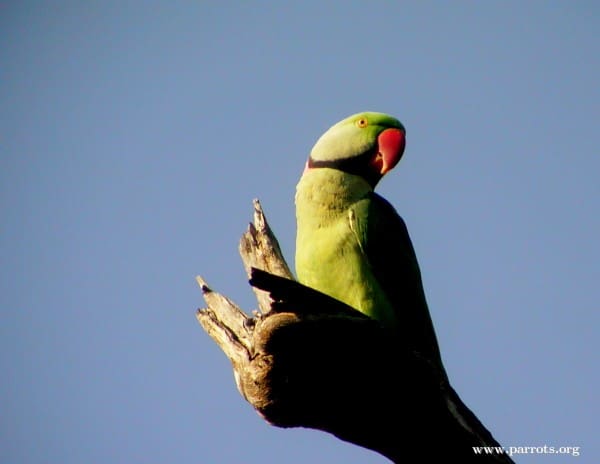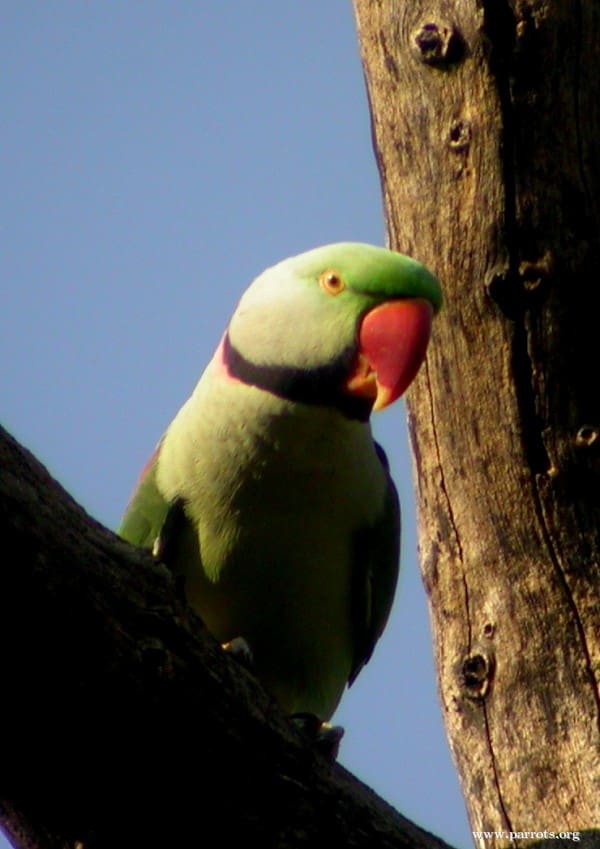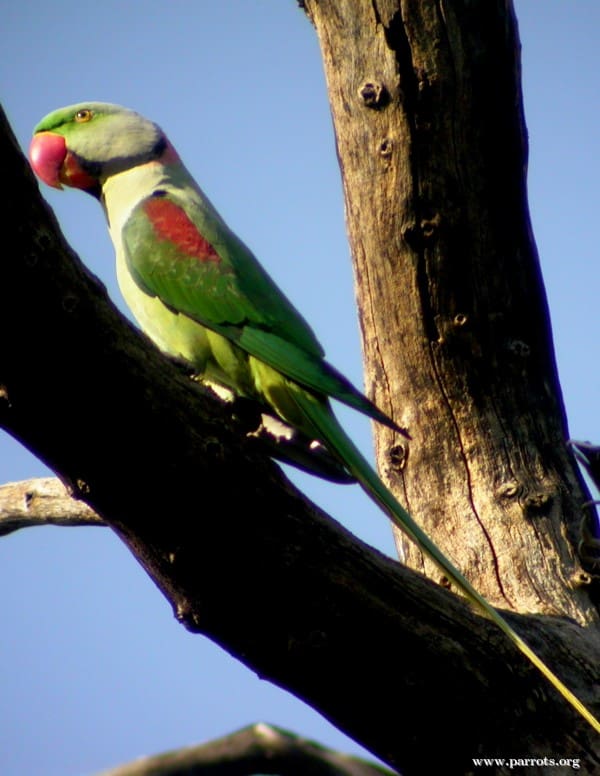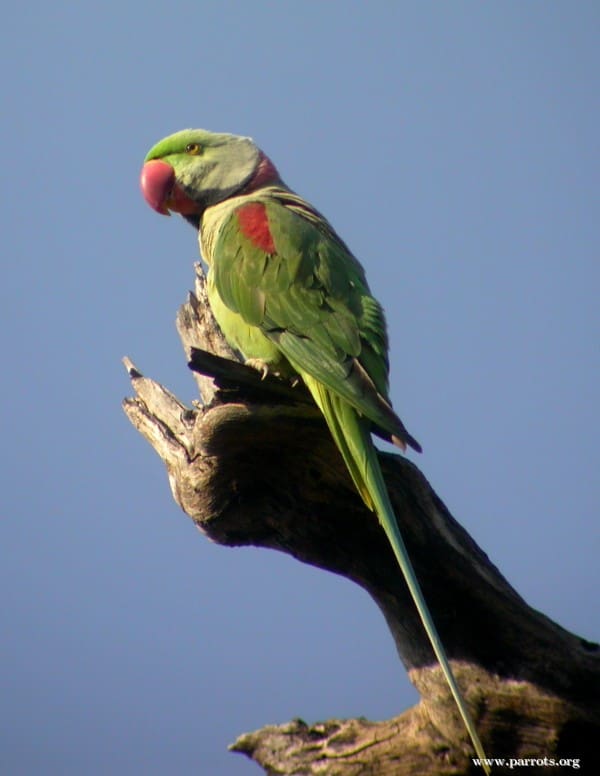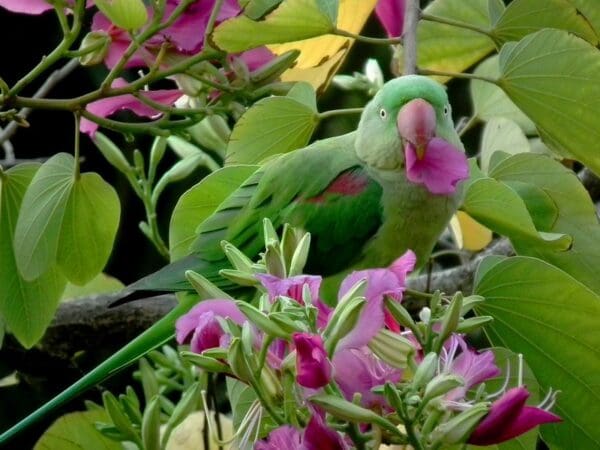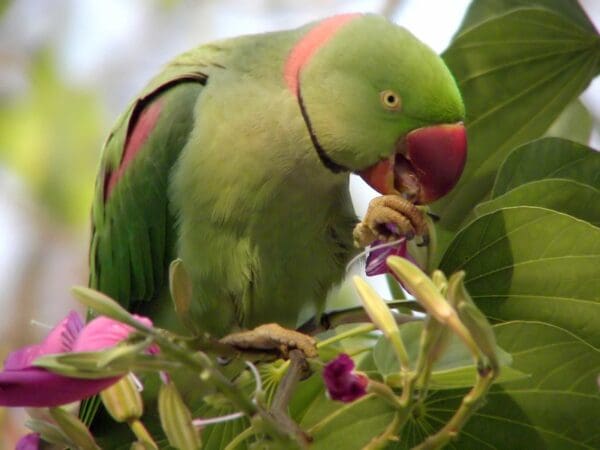Alexandrine Parakeet
Also known as:
Alexandrine Ring-necked Parakeet, Greater Rose-ringed Parakeet, Great-billed Parakeet, Large Parakeet, Large Indian Parakeet (P.e. nipalensis), Large Ceylonese Parakeet (P.e. eupatria), Large Burmese Parakeet (P.e. avensis), Large Andaman Parakeet (P.e. magnirostris), Thai Rose-ringed Parakeet (P.e. siamensis)
Also known as:
Alexandrine Ring-necked Parakeet, Greater Rose-ringed Parakeet, Great-billed Parakeet, Large Parakeet, Large Indian Parakeet (P.e. nipalensis), Large Ceylonese Parakeet (P.e. eupatria), Large Burmese Parakeet (P.e. avensis), Large Andaman Parakeet (P.e. magnirostris), Thai Rose-ringed Parakeet (P.e. siamensis)
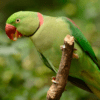
![© Mike's Birds [CC BY-SA 2.0] via Flickr A wild Alexandrine Parakeet feeds in a palm tree](https://parrots.org/wp-content/uploads/2023/01/wpt_Alexandrine-Parakeet_1106-35-100x100.jpg)
![© fredrickfoo [CC BY-SA 2.0] via Flickr A wild Alexandrine Parakeet perches on a limb](https://parrots.org/wp-content/uploads/2023/01/wpt_Alexandrine-Parakeet_1106-34-100x100.jpg)
![© Krishna Prajapati [CC BY-SA 4.0] via Flickr Wild Alexandrine Parakeets feed each other](https://parrots.org/wp-content/uploads/2023/01/wpt_Alexandrine-Parakeet_1106-33-100x100.jpg)
![© Sai Adikarla | [CC BY-SA 2.0] via Flickr A wild Alexandrine Parakeet perches at its nest](https://parrots.org/wp-content/uploads/2023/01/wpt_Alexandrine-Parakeet_1106-32-100x100.jpg)
![© Dr. Raju Kasambe [CC BY-SA 4.0] via Wikimedia Commons A wild Alexandrine Parakeet perches on a wire](https://parrots.org/wp-content/uploads/2023/01/wpt_Alexandrine-Parakeet_1106-31-100x100.jpg)
![© Dr. Raju Kasambe [CC BY-SA 4.0] via Wikimedia Commons A wild Alexandrine Parakeet feeds on seeds](https://parrots.org/wp-content/uploads/2023/01/wpt_Alexandrine-Parakeet_1106-30-100x100.jpg)
![© Sammy Sam [CC BY-SA 3.0] via Wikimedia Commons A wild Alexandrine Parakeet feeds on fruits](https://parrots.org/wp-content/uploads/2023/01/wpt_Alexandrine-Parakeet_1106-19-100x100.jpg)
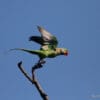
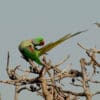
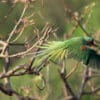
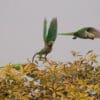
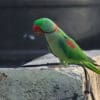
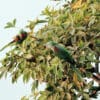
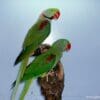
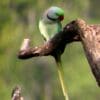
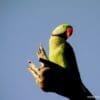

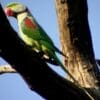

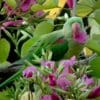
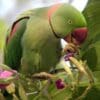
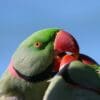
DID YOU KNOW?
One of the largest parakeets, the Alexandrine was named for Alexander the Great, who was rumoured to have one as a companion.

Palaeornis

eupatria
Size:
58 cm (22.6 in)
Weight:
250-260 g (8.75-9.1 oz)
Subspecies including nominate:
five: P.e. eupatria, P.e. nipalensis, P.e. magnirostris, P.e. avensis, P.e. siamensis
Colour Adult:
P.e. eupatria: Male-faint black strip from lores to eye; wide black stripe across lower cheeks; broad pink collar around hindneck; dark purple/red patch on inner secondary coverts. Thighs green/grey. Beak red. Eye pale yellow. Female-duller, with no black under cheeks.
P.e nipalensis: Both adults overall colour more grey/green; broader black stripe across lower cheeks; occiput and cheeks washed with blue; larger.
P.e. magnirostris: Male-thin blue stripe on hindneck above pink collar; brighter red spot on wing; larger; also heavier beak. Female-as in eupatria, but larger beak.
P.e. avensis: Male-as in nipalensis, but thin blue stripe on hindneck, occasionally absent; neck and underparts more yellow/green; smaller beak. Female-as in nipalensis, but smaller beak.
P.e. siamensis: Male-as in avensis, but occiput and nape suffused with blue; paler, more red spot on wing; face and neck yellowish. Female-as in avensis, but face and neck yellowish.
Colour Juvenile:
P.e. eupatria: As in female; shorter tail. Eye grey.
P.e. magnirostris: As in eupatria but larger, heavier beak.
Call:
Harsh and loud in general; described as ringing, loud, deep and scolding. Shrieks accompany the mobbing of predators when alarmed. Flocks will excitedly chorus together.
More Information:
WPT-supported project – Asia’s Parakeets: Rescue from Illegal Trade
Content Sources:
CITES
Avibase
BirdLife International
Cornell Lab of Ornithology/Birds of the World
Parrots: A Guide to Parrots of the World, Juniper and Parr, 1998
Parrots of the World, Forshaw, 2006. 2010 edition
Parrots of the World, Forshaw and Cooper, 1977
Parrots in Aviculture, Low, 1992.
Parrots: Their Care and Breeding, Low, 1986.
Captive Status:
Well established in Australia, less so elsewhere.
Longevity:
25-30 yrs
Housing:
Metal and/or welded mesh construction – wood easily destroyed with powerful beak; walk-in aviary, minimum length 4.5 m (14.76 ft).
Diet:
Fruits such as: apple, pear, orange, banana, cactus fruits, pomegranate, forming about 30 % of the diet; fresh vegetables such as carrot, celery, green peas, beans, fresh corn, green leaves; spray millet and limited mixed seed, cooked/sprouted beans and pulses, complete kibble.
Enrichment:
Swings, bird-safe chewable wood and pine cones, ladders, vegetable tanned leather toys, foot toys, climbing ropes, bathing, push and pull toys.
Nest Box Size:
Vertical box, 12″ x 12″ x 18″ (30.5 cm x 30.5 cm x 46 cm)
Clutch Size:
2 to 4
Fledging Age:
About 7 weeks.
Hatch Weight:
—
Peak Weight:
—
Weaning Weight:
—
World Population:
Unknown but reported to be of variable abundance across range. Moderately rapid decline.
IUCN Red List Status:
Near Threatened
CITES Listing:
Appendix II
Threat Summary:
Not globally threatened. Common in Pakistan and relatively sparse in India, although common in N India and Andaman Islands. Declining in Sri Lanka, Thailand and Indochina; is heavily traded on wild bird market. Rates of habitat loss and degradation will likely affect the species.
Range:
P.e. eupatria: Sri Lanka and Indian peninsula.
P.e. nipalensis: E Afganistan, E and S Pakistan, C India to Nepal, Bhutan and Assam to Bangladesh.
P.e. magnirostris: Andaman Islands and nearby Coco Islands, Bay of Bengal.
P.e. avensis: Cachar district of Assam to S Burma.
P.e. siamensis: N and W Thailand to Cambodia, C Laos, rarely in north; and SC Vietnam.
Habitat:
Found in variety of moist and dry forests and woodlands. Also found in cultivated areas and mangroves. Found up to 900 m (2952 ft).
Wild Diet:
Eats a variety of wild and cultivated seeds, fleshy petals of Bassia latifolia, nectar of Salmalia, Butea and Erythrina flowers, grain, fruit including guavas Psidium guajava and vegetables. Can do damage to crops.
Ecology and Behaviour:
Occurs in small flocks but forms bigger groups where food is abundant and at communal roosts where birds from a large area may gather in one large tree.
Clutch and Egg Size:
2 to 4, broad/oval, 34 x 27 mm (1.3 x 1.05 in)
Breeding Season:
November-April depending on location. Nest is cavity in coconut palm or large softwood.
Related Links:
